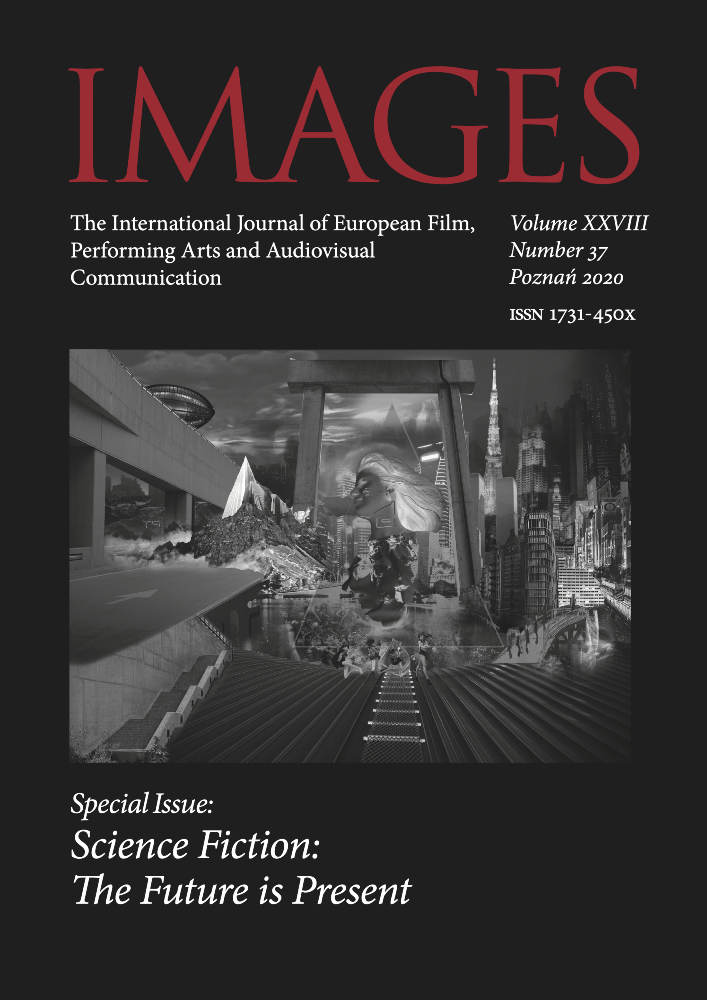Abstract
The paper aims to outline features of video games’ sounds. In order to do that, the author presents the main thesis of ludomusicology and a theory of film music. The first part of the paper deals with a brief introduction concerning the characteristic of two important aspects of video games’ sounds: reactive and anticipating sounds. In the second part of the paper, the author explores the issue of facultative dialogues and adaptive sounds, as well as diegetic and non-diegetic sources of sound. The author examines the hypothesis that using sounds in video games determines gameplay and impacts players immersion.
References
Aska A., Introduction to the Study of Video Game Music, Ebook: Lulu.com 2017
Bordwell D., Thompson K., Film Art. Sztuka filmowa, przeł. B. Rosińska, Warszawa 2014
Chion M., Audio-wizja. Dźwięk i obraz w kinie, przeł. K. Szydłowski, Warszawa, Kraków 2012
Chion M., La voix du cinéma, Paris 1982
Collins K., Game Sound: An introduction to the history, theory, and practice of video game music and sound design, Cambridge 2008
Collins K., Playing with Sound: A theory of interacting with sound and music in video games, Cambridge 2013
Cook N., Pettengill R. (red.), Taking It to the Bridge: Music as performance, Michigan 2013
Glasser M., Dialog in film and fiction, [w]: Explorations in National Cinemas. The 1977 Film Studies Annual: Part One, red. B. Lawtion, J. Staiger, New York 1977
Hacquard G., La musique et le cinéma. Paris 1959
Iuppa N., Borst T., Story and Simulations for Serious Games: Tales from the trenches, Burlington, Oxford 2007
Jørgensen K., Left in the dark: playing computer games with the sound turned off, [w:] From Pac-Man to Pop Music: Interactive audio in games and new media, red. K. Collins, Surrey 2008, s. 163–176
Kaae J., Theoretical approaches to composing dynamic music for video games, [w:] From Pac-Man to Pop Music: Interactive Audio in Games and New Media, red. K. Collins, Surrey 2008, s. 75–92
Kozłowski K., Stanley Kubrick, Warszawa 2013 Lerner N., Mario’s dynamic leaps: musical innovations (and the specter of early cinema) in Donkey Kong and Super Mario Bros., [w:] Music in Video Games: Studying Play, red. K.J. Donelly, W. Gibbons N. Lerner, New York 2014, s. 3–23.
Manovich L., Język nowych mediów, przeł. P. Cypryański, Warszawa 2006
Moseley R., Playing games with music (and vice versa): ludomusicological perspectives on Guitar Hero and Rock Band, [w:] Taking It to the Bridge: Music as performance, red. N. Cook, R. Pettengill, Michigan 2013, s. 279–318
Pająk J., Dźwięk w filmie. Między sztuką a rzemiosłem, Warszawa 2018
Phillips W., A Composer’s Guide to Game Music, Cambridge 2014
Pomostowski P., Reżyser na ścieżce dźwiękowej. Funkcje muzyki w twórczości filmowej Romana Polańskiego, Poznań 2018
Richard T., Summers D., Video Game Music: History, form and genre, Bristol 2012
Slowik M., After the Silents: Hollywood film music in the early sound era, 1926–1934, New York 2014
Summers T., Understanding Video Game Music, Cambridge 2016
Sweet M., Writing Interactive Music for Video Games: A composer’s guide, New Jersey 2015
Whalen Z., Play along – an approach to videogame music, „Game Studies: The International Journal of Computer Game Research” 2004, nr 4(1), <http://www.gamestudies.org/0401/whalen/>, dostęp: 15.12.2019
CYTOWANE GRY WIDEO:
Brothers: A Tale of Two Sons [gra wieloplatformowa], Starbreeze Studios, 2013
Dead Space [gra wieloplatformowa], EA Redwood Shores, 2008
Donkey Kong [gra wieloplatformowa], Nintendo, 1981
God of War [PS4], SIE Santa Monica Studio, 2018
Grand Theft Auto: San Andreas [gra wieloplatformowa], Rockstar North, 2004
Limbo [gra wieloplatformowa], Playdead, Double Eleven, 2010
Red Dead Redemption II [gra wieloplatformowa], Rockstar Games, 2018
Super Mario Bros. [NES], Nintendo, 1985
Wiedźmin 3: Dziki Gon [gra wieloplatformowa], CD Projekt RED, 2015
License
Copyright (c) 2020 Joanna Pigulak

This work is licensed under a Creative Commons Attribution 4.0 International License.

